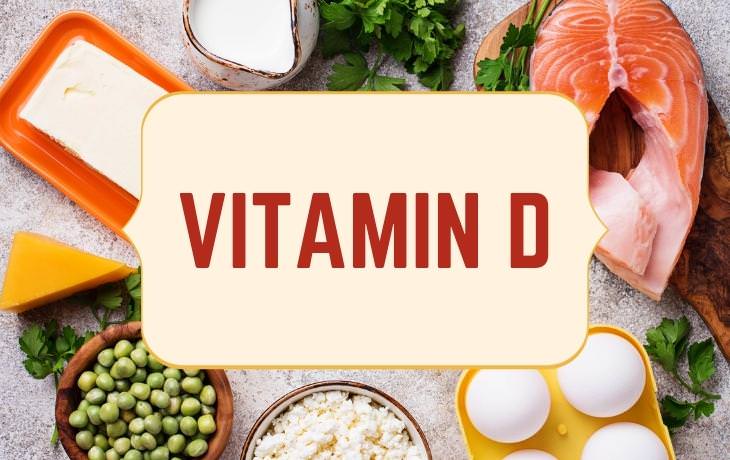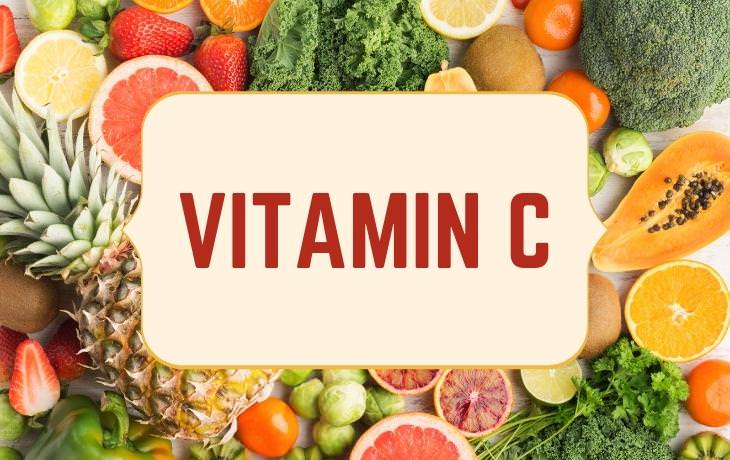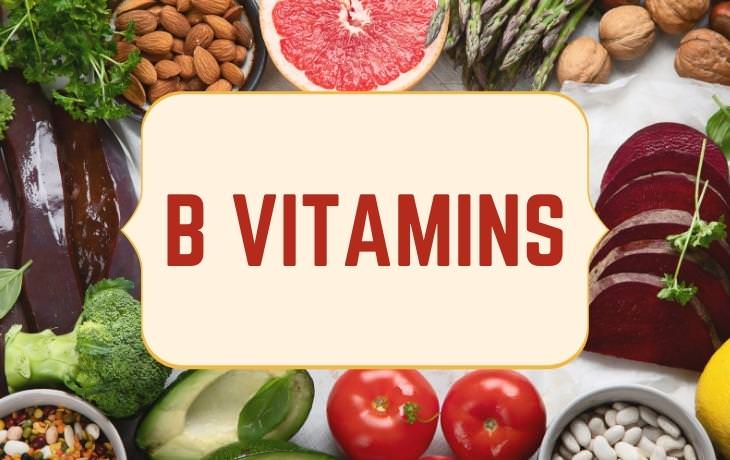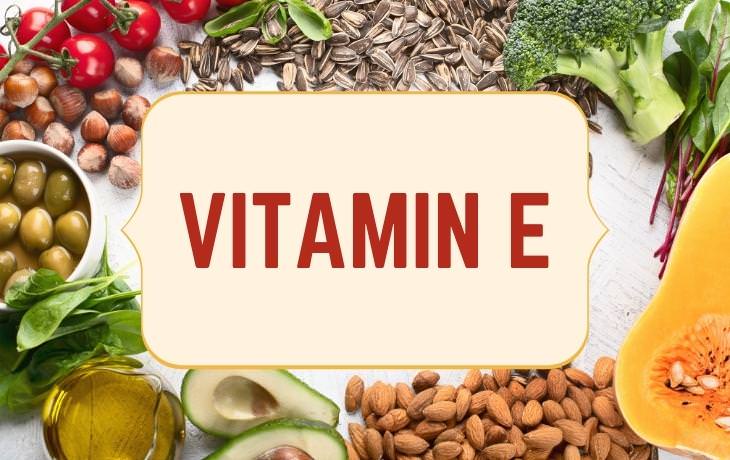
Chronically high levels of inflammation can be caused by anything from an underlying health condition to stress, insomnia, or poor dietary choices. So you might be thinking that having high inflammation is just a side effect of life. And that might be the case for some people, but inflammation is also a huge risk factor for a whole host of serious health issues - from type 2 diabetes to cardiovascular disease, joint issues, and even cancer. Therefore, we should all be focused on bringing down those levels of inflammation.
Unfortunately, inflammation puts your body into stress mode, and sometimes, it’s difficult to bring the level of inflammation back to baseline without making comprehensive changes in your lifestyle. One of the easiest tweaks to make is, of course, your diet. And researchers have accumulated enough information suggesting that basic nutrients like vitamins play an immensely important role in reducing inflammation.
But which specific vitamins should you focus on when your main concern is fighting inflammation? Start with these 5, as they have the most scientific backing:

As you may or may not know, vitamin D deficiencies are fairly common and affect more than 41% of Americans. Older people, especially elderly men, have a higher risk of severe vitamin D deficiency. Vitamin levels, including vitamin D, can be easily checked via bloodwork. So if you suspect that you have any vitamin deficiency, talk to your physician about getting tested.
How much vitamin D do you need?
The human body produces Vitamin D naturally when it is exposed to the sun, but some people can’t produce enough of this vitamin this way and require either supplementation or consuming more foods rich in vitamin D.
If you take a supplement that contains vitamin D, you have to be careful because this vitamin is fat-soluble, which means that it can build up in your fat cells over time. Too much vitamin D buildup, in turn, can lead to toxicity. It is for this reason that adults are recommended to take no more than 25-50 micrograms (mcg) of vitamin D per day. Of course, you can also get your daily vitamin D dose from foods. The foods below contain plenty of vitamin D.
Food sources of vitamin D
Related Article: 10 Food Items That Are Absolutely Chock Full of Vitamin D
We’re all familiar with vitamin C and its ability to boost our immune health and produce collagen to keep our skin young and our joints healthy, but did you know that it can also fight free radicals - the cause of inflammation? Vitamin C is a very strong antioxidant that picks up the free radicals and prevents them from harming healthy cells. Consuming enough vitamin C can boost your blood antioxidant levels by up to 30%!
Researchers have known for a while that vitamin C can dramatically lower the levels of inflammation in patients suffering from acute disease. It is for this reason that patients hospitalized with severe respiratory illnesses are given vitamin C intravenously. But researchers now believe that there’s another way in which vitamin C fights inflammation. It lowers the levels of a blood marker called C-reactive protein (CRP), which is an indicator of inflammation.

How much vitamin C do you need?
Unlike vitamin D and some of the other vitamins listed in this article, vitamin C is water-soluble, which means that it will leave your body throughout the day and doesn’t come with the risk of building up and causing toxicity. Generally speaking, women are recommended to take 75 milligrams (mg) of vitamin C daily, and men should aim towards 90 mg. Pregnant women need more (85 mg), and so do breastfeeding women - 120 mg. Even though there’s no serious health risk with taking high doses of vitamin C, it’s possible to get diarrhea if you take more than 2,000 mg of the vitamin in a day, so consider yourself warned.
Researchers say that the best way to get vitamin C is through your diet, although supplements are also available. Luckily, there’s no shortage of healthy foods rich in vitamin C, just pick your color of fruit and vegetable - red, orange, green, or yellow - and enjoy the benefits of this vitamin.
Related Article: The Proven Health Benefits of Vitamin C
Food sources of vitamin C
B vitamins are a group of vitamins that are traditionally grouped together because they are found in identical or similar foods. These vitamins are thiamine (B1), riboflavin (B2), niacin (B3), pantothenic acid (B5), pyridoxine (B6), biotin (B7), folic acid (B9), and cobalamins (B12). The two B vitamins that are known for their anti-inflammatory properties are vitamin B6 and folic acid, so we will focus on them from now on.
First of all, medical researchers have long pointed out that people with low vitamin B6 levels often also have high levels of CRP, that inflammatory marker we’ve mentioned earlier. CRP is an especially good predictor of rheumatoid arthritis and other autoimmune diseases.

One medical study in patients with rheumatoid arthritis provides evidence for this. In the study, the participants took either 5 mg of folic acid alone or combined the folic acid with 100 mg of vitamin B6. After 3 months, the levels of inflammation in the group that took both folic acid and B6 daily were significantly lower, though both groups experienced some improvement. This suggests that both of these B vitamins play a role in reducing inflammation in the joints.
There’s an additional study suggesting that low doses of folic acid alone may also fight inflammation. So consider including both in your diet, especially if you suffer from chronic inflammation due to rheumatoid arthritis.
How much vitamin B6 and folate should you get?
Maintaining adequate levels of vitamin B is important at any age, but the specific recommendations vary depending on one’s biological sex and age. This is because seniors, pregnant women, people with certain underlying health conditions, vegetarians and vegans, and heavy drinkers and smokers are more likely to develop a B vitamin deficiency.
Here are the recommendations from the National Institute of Health:
When it comes to vitamin B6, adults 50 or younger ought to take 1.3 mg, males over 50 need 1.7 mg, females over 50 - 1.5 mg, pregnant women - 1.9 mg, breastfeeding women - 2 mg. For folic acid, 400 mcg is the daily recommendation for most adults, but women who wish to get pregnant should increase the dose to a maximum of 1,000 mcg daily.
Like vitamin C, all B vitamins are water-soluble, so you don’t need to worry about overdosing.
Food sources of B vitamins
Include plenty of dark leafy greens, such as spinach, kale, and asparagus, as well as beans, cereals, dairy, eggs, meat, seafood, and organs to increase your intake of folate. Some of the same foods also contain plenty of vitamin B6, but you go to our article about this vitamin to read a long list of sources, complete with daily requirements, here - Why Getting Enough Vitamin B6 Is Crucial & How to Get Enough of It.
Vitamin A, or retinol, is similar to vitamin C, in the sense that it both boosts your immune system and acts as a powerful antioxidant. This vitamin comes in two distinct forms: beta-carotene and vitamin A. Beta-carotene, the vitamin present in all orange fruits and vegetables, is a provitamin, meaning that the human body transforms it into vitamin A.

As for direct vitamin A, it is an antioxidant that fights free radicals and prevents damage to cells. We know that a diet rich in both of these forms of vitamin A can cut down the levels of inflammation in the body. Research also suggests that vitamin A prevents the immune system from “overreacting” by increasing levels of inflammation in the body.
How much vitamin A do you need?
Your diet is the best source of vitamin A, as this will prevent you from ingesting too much of it. Vitamin A is fat-soluble, so be careful if you take it in the form of a supplement. Healthy adults should take 900 mcg of vitamin A for men and 700 mcg for women. Pregnant women are advised to increase their intake of vitamin A to 770 mcg, and breastfeeding women should further increase it to 1,300 mcg. Read more about the benefits of vitamin A here - A Complete Guide to the Importance of Vitamin A.
Food sources of vitamin A

The last vitamin on our list is vitamin E or tocopherol. It is also an antioxidant, which means that it can reduce inflammation by reducing oxidation and neutralizing all those free radicals in the body. There’s quite a lot of scientific evidence suggesting that consuming more vitamin E is beneficial for people living with inflammatory health conditions. A study from the European Journal of Clinical Nutrition suggests that those who suffer from chronic inflammation will benefit from vitamin E.
How much vitamin E do you need?
According to Harvard Health, the Recommended Dietary Allowance for vitamin E is 15 mg daily for people aged 15 and older, including pregnant persons. Breastfeeding women are recommended to increase their intake to 19 mg every day. Although vitamin E is a fat-soluble vitamin, there are no known cases of toxicity from people eating foods that contain a lot of vitamin E.
However, if you’re taking a vitamin E supplement and you accidentally take too much, this can increase your risk of bleeding, especially if you’re also on blood thinners (for example, warfarin). This is why you should never take more than 1,000 mg of vitamin E a day.
Food sources of vitamin E
Share this information with those who will find it useful!
H/T: Very Well Health, Healthline